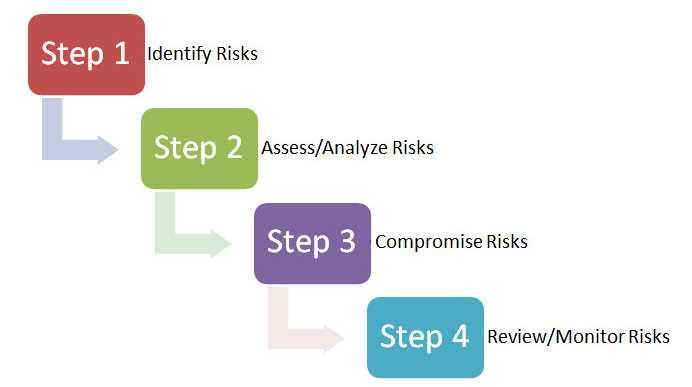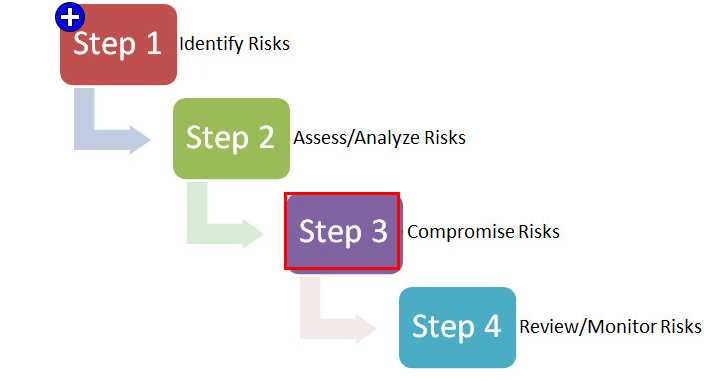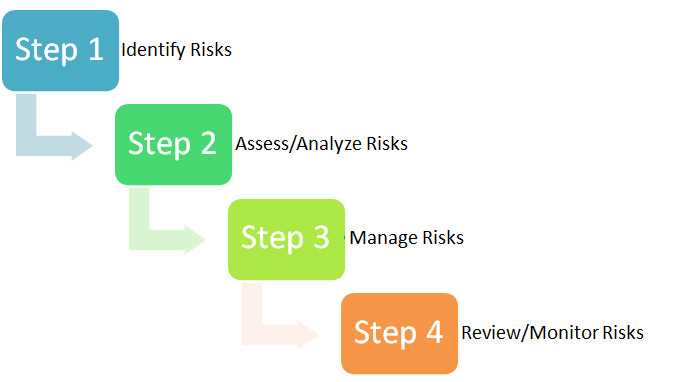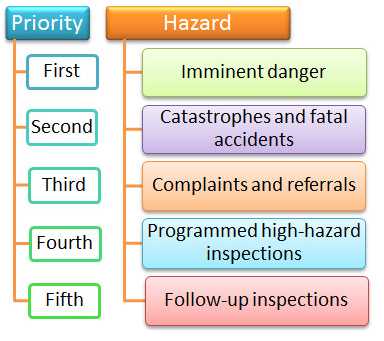hrci SPHR Exam Questions
Questions for the SPHR were updated on : Nov 21 ,2025
Page 1 out of 45. Viewing questions 1-15 out of 671
Question 1
HOT SPOT
Mark the step that does NOT come under risk management.
Answer:

Explanation:
The steps of risk management are as follows:
Chapter: Risk Management
Question 2
DRAG DROP
Drag and drop the OSHA inspection hazards according to their priorities.
Answer:

Explanation:
The OSHA inspection hazards in their order of priority are as follows:
Chapter: Risk Management
Objective: Risk Assessment
Question 3
FILL IN THE BLANK
The doctrine of ________________ negligence was used to mitigate the employer's responsibility if
the worker's actions contributed in any way to the injury.
Answer:
contributory
Explanation:
The doctrine of contributory negligence was used to mitigate the employer's responsibility if the
worker's actions contributed in any way to the injury.
Chapter: Risk Management
Objective: Risk Management
Question 4
Which of the following injuries would be considered work-related for purposes of reporting?
- A. An employee choked on a sandwich while eating her lunch.
- B. An employee caught a cold from a co-worker.
- C. An employee fell in the parking lot while playing a voluntary game of basketball on his lunch break.
- D. An employee sprained his ankle while loading a truck on the dock.
Answer:
D
Explanation:
Answer option D is correct.
Generally, injuries are not work-related if the employee is engaged in a voluntary wellness activity
(C), eating food prepared for personal consumption (A), or has the common cold/flu (B). This is
important for two reasons: to determine OSHA recordability and to determine compensability under
workers' compensation.
Chapter: Risk Management
Objective: Review Questions
Question 5
Under OSHA regulations, employers do not have the right to do which of the following?
- A. Request a variance to an OSHA standard while waiting for repairs
- B. Consult with OSHA to correct hazards without fear of a citation and penalty
- C. File a Notice of Contest within 30 days of the citation
- D. Refuse to allow an OSHA inspector on the premises
Answer:
C
Explanation:
Answer option C is correct.
A Notice of Contest must be filed within 15 days of the citation. The OSH Act requires employers to
allow the CSHO to inspect the workplace (D). Employers may request variances until repairs are
made (A) or for processes that provide equal or greater safety for workers. Employers may consult
with OSHA to identify possible hazards without fear of a citation or penalty (B); but once a consultant
becomes involved, the employer must abate any violations, or the consultant will refer the violation
to an OSHA inspector.
Chapter: Risk Management
Objective: Review Questions
Question 6
Which of the following Acts applies to children in the workforce?
- A. Occupational Safety and Health Act (OSHA)
- B. Drug-Free Workplace Act
- C. Fair Labor Standards Act (FLSA)
- D. Mine Safety and Health Act (MSHA)
Answer:
C
Explanation:
Answer option C is correct.
Chapter: Risk Management
Objective: Risk Assessment
Question 7
Which of the following has established standards for personal protective equipment (PPE)?
- A. Drug-Free Workplace Act
- B. Mine Safety and Health Act (MSHA)
- C. Fair Labor Standards Act (FLSA)
- D. Occupational Safety and Health Act (OSHA)
Answer:
D
Explanation:
Answer option D is correct.
Chapter: Risk Management
Objective: Risk Assessment
Question 8
If an employee files a complaint with OSHA, under which of the following would they be protected?
- A. Emergency action
- B. Physical environmental hazard
- C. General-duty clause
- D. Whistle-blower protection
Answer:
D
Explanation:
Answer option D is correct.
Whistleblower standards protect an employee's right to file a complaint to OSHA about a workplace
safety or health hazard. It is considered a basic employee right granted under the OSH act in 1970.
Emergency action (A) is a type of plan required by OSHA, and the general duty clause (C) states that
employers have a general duty to provide a safe and healthy workplace for employees.
Chapter: Risk Management
Objective: Review Questions
Question 9
Which of the following Acts establishes mandatory safety and health standards for mine operators
and monitors operations throughout the United States?
- A. FLS act
- B. SBREF act
- C. OSH act
- D. MSH act
Answer:
D
Explanation:
Answer option D is correct.
Chapter: Risk Management
Objective: Risk Assessment
Question 10
The union rep has requested copies of all the incident reports filed during the last year. You are
required to do what?
- A. Furnish copies within 15 calendar days but only of the -Tell Us About the Case " section
- B. Furnish the copies by the end of the next business day
- C. Furnish copies of the -Tell Us About the Case " section within 7 calendar days
- D. Furnish the copies by the end of the day
Answer:
C
Explanation:
Answer option C is correct.
The employee representative is entitled to receive copies of incident reports with the identifying
information omitted. Employers have 7 calendar days to provide the information to an employee
representative. Copies of the OSHA form 300 log must be provided by the end of the following
business day (B) when requested by employees or their representatives. Options A and B do not
apply to OSHA requirements.
Chapter: Risk Management
Objective: Review Questions
Question 11
Which of the following Acts provides benefits to coal miners?
- A. Black Lung Benefits Act
- B. Federal Employees Compensation Act
- C. Occupational Safety and Health Act
- D. Sarbanes-Oxley Act
Answer:
A
Explanation:
Answer option A is correct.
Chapter: Risk Management
Objective: Risk Management
Question 12
How can an employer determine whether a job creates an ergonomic hazard for an employee?
- A. Review the MSDS.
- B. Observe the incumbent performing the job duties.
- C. Review and analyze the OSHA logs.
- D. Review and analyze the workers' compensation records.
Answer:
B
Explanation:
Answer option B is correct.
Although a review and analysis of OSHA logs (C) or workers' compensation records (D) can be used to
determine any injury patterns occurring in the workplace, observing the incumbent (B) performing
the work is necessary to determine whether there is an ergonomic hazard in the job. An MSDS (A)
describes chemical hazards unrelated to ergonomics.
Chapter: Risk Management
Objective: Review Questions
Question 13
Millie is an injured worker who has been back to work on modified duty for approximately 13
months. Which of the following return-to-work strategies would best help Millie get back to full
duty?
- A. Paying to have her evaluated by an independent medical examiner
- B. Reasonably accommodating her into a more permanent position
- C. Terminating her employment as she is no longer qualified to do the work for which she was hired
- D. Continuing the modified duty assignment until she is released to full duty
Answer:
A
Explanation:
Answer option A is correct.
An IME will allow Millie to be evaluated by an impartial third party. Modified duty is a short-term
solution to be used when an injured worker is able to return to work but not to full duty (D). A
reasonable accommodation strategy (B) may become necessary, but only after Millie's diagnosis and
treatment plan is clearly understood. Terminating her employment (C) prior to identifying the extent
of her qualifications and limitations is not advisable.
Chapter: Risk Management
Objective: Review Questions
Question 14
Which of the following Acts requires employers to record health and safety incidents that occur each
year and to document steps they take to comply with regulations?
- A. Occupational Safety and Health Act
- B. Mine Safety and Health Act
- C. Drug-Free Workplace Act
- D. Sarbanes-Oxley Act
Answer:
A
Explanation:
Answer option A is correct.
Chapter: Risk Management
Objective: Risk Assessment
Question 15
Which of the following groups have not been identified for protection under the Americans with
Disabilities Act as it relates to substance abuse?
- A. Current abusers of alcohol
- B. Current users of legal drugs
- C. Current users of illegal drugs
- D. Recovering addicts
Answer:
C
Explanation:
Answer option C is correct.
Current users of illegal drugs are specifically excluded from protection under the ADA. The ADA,
however, does not require that an employer retain any employee whose substance abuse—
regardless of the status or type of substance—represents a serious safety risk to themselves or
others. Recovering addicts are protected by the ADA. And, depending on certain conditions, users of
legal substances such as alcohol or prescription drugs may be protected by the ADA.
Chapter: Risk Management
Objective: Review Questions